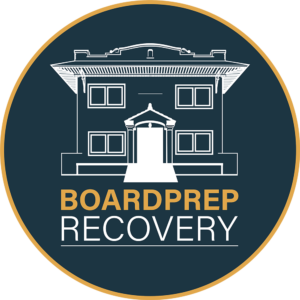The National Institute on Alcohol and Alcoholism estimates 17 million American adults have an alcohol use disorder, which they define as “a medical condition characterized by an impaired ability to stop or control alcohol use despite adverse social, occupational or health consequences.”[1]
In spite of how prevalent this condition is, a nationwide study based on the latest data from the National Survey on Drug Use and Health (NSDUH) reports that the majority of those who are afflicted by this disorder do not receive treatment for it, even when they tell their primary care doctor or another health care professional about their issues with alcohol.[2]
The study’s authors—based in St. Louis at the Washington University School of Medicine—observed approximately 80 percent of people who fit the criteria for alcohol use disorder had been to a physician, medical clinic or hospital for various reasons during the prior year, with about 70 percent of those people having been asked about their alcohol consumption. However, only 10% were encouraged by a healthcare professional to reduce their intake of alcohol, and just 6% got any sort of treatment.[3]
Longitudinal research conducted earlier this year indicates that among those afflicted with an alcohol use disorder who try to cease drinking on their own every year, only 25 percent are able to successfully decrease their use of alcohol long-term.[4]
Given no solution has been discovered that fits everyone having an alcohol use disorder, a number of medications have been approved by the F.D.A. to treat it – prescription pills including acamprosate and disulfiram, as well as oral and injectable forms of naltrexone. Each of these can decrease cravings and the urge to imbibe, enabling many people to abstain or cut back, particularly when done in tandem with behavioral interventions like therapeutic counseling.
However, despite these mediations’ effectiveness, doctors rarely prescribe the drugs, even when their benefits are obvious to the patient suffering from an alcohol use disorder. One of the main reasons is many doctors aren’t adequately trained to deal with addiction or sufficiently educated on the medications approved to treat it.
A recent study published in the Journal of American Medical Association Psychiatry concluded less than 2% of the millions of U.S. adults with an alcohol use disorder had been prescribed a medication to help them cut or eliminate their alcohol intake.[5]
Dr. Wilson Compton, Deputy Director of the National Institute on Drug Abuse, and one of the study’s authors, said, “These are potentially life-saving medications, and what we found is that even among people with a diagnosable alcohol use disorder the rate at which they are used is extremely low.”[6]
The problems associated with these findings are significant. First of all, alcohol abuse and addiction are leading causes of preventable diseases and death, responsible for nearly 100,000 U.S. deaths each year. As well, alcohol contributes to millions of auto accidents, heart attacks, cancers and other illnesses. Further, research shows it’s responsible for huge numbers of work accidents and lost work productivity, plus being a harmful, if not destructive force in marriages and personal relationships.[7]
Yet counterintuitively, for a number of reasons, those who need treatment rarely get it from their doctors. Some physicians are swayed by the stereotype of people who struggle with alcohol are difficult patients with an unmanageable condition. In other cases, doctors without a background in addiction may worry that they don’t have the expertise to treat alcoholism. Or they may feel uncomfortable prescribing medications for it, even though doing so does not require special training, says Dr. Carrie Mintz, an assistant professor of psychiatry at Washington University and a co-author of the study last month that reviewed U.S. alcohol treatment rates. “There’s a stigma associated with substance use disorder,” stated Dr. Mintz.[8]
But Dr. Compton at the National Institute on Drug Abuse offers another reason for the minimal medical support and low rates of treatment. Heavy drinkers are often in denial.
Dr. Compton observes, “People are perfectly willing to tell you about their symptoms and the difficulties they face. But then if you say, ‘Do you think you need treatment?’ they will say they do not. There’s a blind spot when it comes to putting those pieces together.”[9]
Research backs Dr. Compton’s position. Those who meet the criteria for alcohol use disorder typically do not feel they need treatment for it, even when they acknowledge having symptoms like trying to cut back on alcohol to no avail, experiencing strong cravings, and continuing to drink despite it causing health and relationship problems.[10]
Supportive, evidence-based treatment for an alcohol use disorder can be found at a local addiction treatment center in your area.
[1] National Institute on Alcohol and Alcoholism. “Treatment for Alcohol Problems: Finding and Getting Help.”
[2] Mintz, C.M., et al. “A cascade of care for alcohol use disorder: Using 2015-2019 National Survey on Drug Use and Health data to identify gaps in past 12-month care.” Alcoholism, Clinical & Experimental Research. June 2021.
[3] Ibid.
[4] Kinreich, S., et al. “Predicting alcohol use disorder remission: a longitudinal multimodal multi-featured machine learning approach.” Translational Psychiatry. March 2021.
[5] Han, B., et al. “Use of Medications for Alcohol Use Disorder in the US: Results From the 2019 National Survey on Drug Use and Health.” JAMA Psychiatry. June 16, 2021.
[6] Ibid.
[7] National Institute on Alcohol and Alcoholism. “Alcohol Facts ands Statistics.”
[8] Mintz, C.M., et al. “A cascade of care for alcohol use disorder: Using 2015-2019 National Survey on Drug Use and Health data to identify gaps in past 12-month care.” Alcoholism, Clinical & Experimental Research. June 2021.
[9] Han, B., et al. “Use of Medications for Alcohol Use Disorder in the US: Results From the 2019 National Survey on Drug Use and Health.” JAMA Psychiatry. June 16, 2021.
[10] National Institute on Alcohol and Alcoholism. “Understanding Alcohol Use Disorder.”







